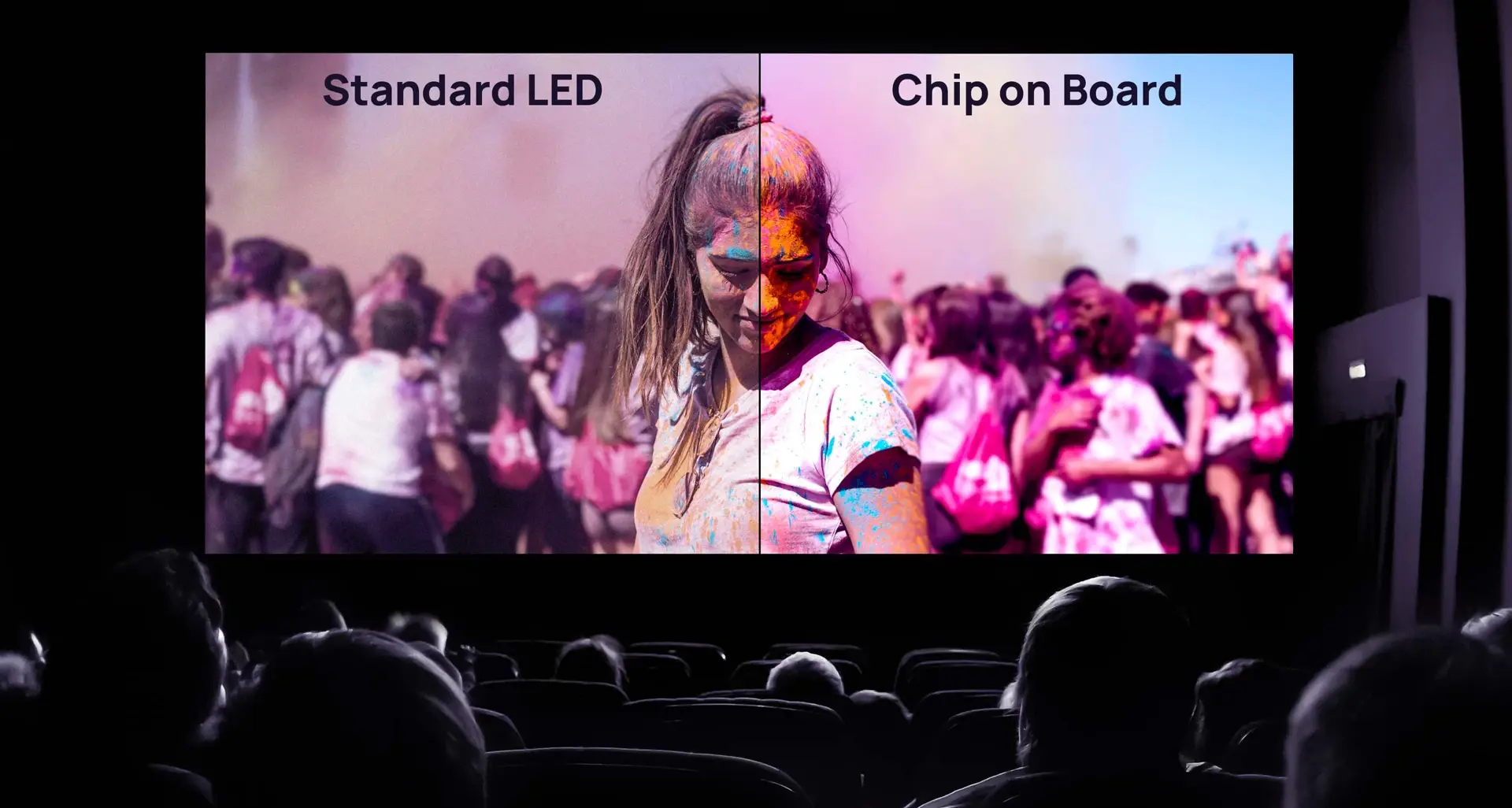In the vibrant world of LED displays, whether it be for digital signage or entertainment, one factor that significantly influences image quality is contrast. This blog post delves into the crucial role contrast plays in enhancing the visual experience across both indoor and outdoor LED displays.
We'll explore the technological nuances that make high contrast displays superior, and why paying attention to this specification can make a world of difference in how content is transmitted and received by your target audiences.
LED displays are pivotal in captivating audiences, whether for DOOH advertising, information dissemination, or an immersive environment. High contrast ratios are essential, but what governs LED display contrast? The below blog should help you learn the key things to look out for when looking for your next big screen solution.
Example of a contrast ratio & what it means: A 10,000:1 contrast ratio means the display’s brightest whites are 10,000 times brighter than its darkest blacks, enhancing detail clarity and making images appear more vibrant and lifelike.
Did you know: LED displays and OLEDs are one of the few display technologies on the market that are capable of displaying true black: #000000.
Indoor LED displays are increasingly adopting finer pitch configurations. In indoor environments, where ambient light can often be controlled but still varies, a crucial yet frequently overlooked factor in contrast is the darkness of the pixel faces and the materials used between them, including their reflective properties.
Previously, achieving consistent "blackness" between pixels was challenging, so masking (Fig.D) with extremely dark materials was applied to enhance contrast and increase pixel durability. However, as pixel pitches have tightened, applying such masking has become difficult, with inconsistent results.
One effective way to improve contrast is by using black-faced pixels instead of white-faced pixels (Fig.B), as shown below. This reduces the amount of white or low-contrast material on the display surface, especially with larger diode/pixel displays, though it can impact NIT output.
Generally speaking, black faced diodes are not used in the outdoor market, as these screens require maximum brightness output. This means that the materials making up the rest of the display surface are crucial to governing display contrast, and ultimately image quality, when in high ambient light.
The next thing you can do is explore the type of pixel you use. The below diagram (Fig.C) shows SMD, Flip Chip SMD and COB pixel configurations. COB pixels don't use packaging, rather their RGB diodes are mounted directly onto the PCB substrate, this results in a larger area of the module being subject to a high contrast material, resulting in vastly superior contrast ratios.
![]()
The contrast of an LED display is fundamentally determined by a combination of these critical components. White-faced pixels, inadequate contrast between pixels, and a highly reflective finish can cause ambient light to wash out the display, significantly diminishing image quality.
Colour performance affects contrast by enhancing the distinction between hues, making images more vivid. Accurate colour reproduction makes bright areas more intense and helps dark tones appear richer, especially indoors where ambient light is lower.
Grayscale accuracy, particularly at low brightness levels, is essential for detail in shadows and dark areas. Outdoors, high grayscale accuracy prevents dark areas from appearing flat, maintaining clarity under direct sunlight. Together, these factors allow for a dynamic contrast ratio by balancing brightness, colour depth, and grayscale performance, adapting to indoor or outdoor lighting conditions to optimise visual quality.
Find out more about Colour Bit Depth and Grayscale here.

In conclusion, contrast plays a fundamental role in determining the image quality of LED displays, affecting both indoor and outdoor applications.
As technology advances, understanding and improving contrast ratios in LED displays will continue to be a key focus for manufacturers and users alike, aiming to enhance visual communication and entertainment experiences across the board.